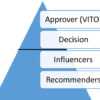Performance management for Business Development Representatives (BDRs) is a multi-faceted task that involves monitoring activities, improving connect rates, and refining messaging strategies. In this post, we’ll delve into key aspects of performance management, including activity tracking, coaching frameworks, and the importance of maintaining high standards for lead quality. These insights are drawn from detailed coaching sessions and strategic discussions from SDR Managers.
Dashboard and Activity Review
Creating and utilizing dashboards to track BDR performance is crucial. 1:1’s should start with a review of the previous week’s numbers to assess performance. Then the BDR should walk their manager through their dashboard metrics from the previous week. This systematic approach ensures that all aspects of a BDR’s performance are monitored and addressed.
Activity Management
Activity metrics, including the number of contacts prospected, calls made, and emails sent, form the backbone of performance tracking. A coaching coaching session may start with a brief check-in before diving into data. This helps in understanding any challenges faced by the BDR and setting the stage for more focused discussions on performance metrics.
Simplifying Coaching
BDR managers need to simplify complex information and focus on key metrics. Lobo acknowledges the challenge of maintaining a broad view while trying to simplify his approach. By breaking down performance metrics into manageable components, coaches can provide clearer and more actionable feedback.
Task Management
Effective task management in Salesforce and SalesLoft drives daily activities. Overdue tasks can indicate time management issues rather than intentional neglect. Emphasizing the importance of completing tasks on time and using tools to manage daily activities can help BDRs stay organized and productive.
Analyzing Connect and Conversation Rates
Connect rates (percentage of calls that result in a person picking up) and conversation rates (calls lasting over 60 seconds) are critical for diagnosing performance issues. A high connect rate with a low conversation rate suggests issues with the intro or handling initial objections. Strategies for improving these rates include adjusting call times and targeting the right titles.
Conversion Rates
Conversion rates from Account Executive (AE) follow-up to opportunities are crucial metrics. Sommer provides company benchmarks, noting that a 55% conversion rate is considered good. This helps in setting realistic targets and understanding the effectiveness of the BDR’s qualification process.
MATT Framework
Sommer introduces the MATT framework (Messaging, Activity, Targeting, and Timing) for coaching BDRs. This framework helps identify the most impactful areas to focus on during coaching sessions. By addressing issues in messaging, activity, targeting, and timing systematically, coaches can provide more structured and effective guidance.
Future Planning and Support
Continuous improvement and support are essential. Sommer reassures Lobo about the importance of their roles and the value of ongoing coaching. Discussions about potential new hires and team building also play a crucial role in maintaining a strong and motivated team.
Practical Insights and Examples
Using practical examples, such as tracking and following up on activities with a warm leads tracker, helps in balancing quantity and quality in prospecting and outreach activities. These insights provide actionable steps that BDRs can implement in their daily routines.
Emotional and Motivational Support
Managing and supporting a team effectively requires both emotional and motivational support. Acknowledging the emotional aspects of performance management and providing clarity and support can significantly enhance team morale and performance.
Next Steps and Action Items
- Continue Building and Using Dashboards: Collaborate with team members to create better dashboards for tracking BDR performance. Use these dashboards in coaching sessions to provide clear, actionable insights.
- Implement MATT Framework: Apply the MATT framework in one-on-one coaching sessions to systematically address performance issues. Focus on one key area at a time to avoid overwhelming BDRs.
- Monitor and Improve Connect and Conversation Rates: Regularly review connect and conversation rates to identify and address issues with initial outreach. Coach BDRs on improving their intros and handling shallow objections to extend conversations beyond 60 seconds.
- Track and Enhance Conversion Rates: Set clear benchmarks for conversion rates and coach BDRs to meet or exceed these targets. Ensure BDRs understand the importance of qualifying leads and targeting the right contacts.
- Enhance Task Management Practices: Emphasize the importance of completing tasks on time and using tasks to manage daily activities effectively. Provide additional support and training on using SalesLoft and Salesforce for task management.
- Maintain Regular Check-Ins and Support: Continue regular one-on-one sessions with BDRs to address ongoing concerns and provide support. Ensure open communication and encourage BDRs to share their challenges and successes.
By following these steps, the team can improve their performance, enhance their outreach strategies, and achieve better results in their business development efforts. This structured approach to performance management ensures that BDRs receive the support and guidance they need to succeed.









